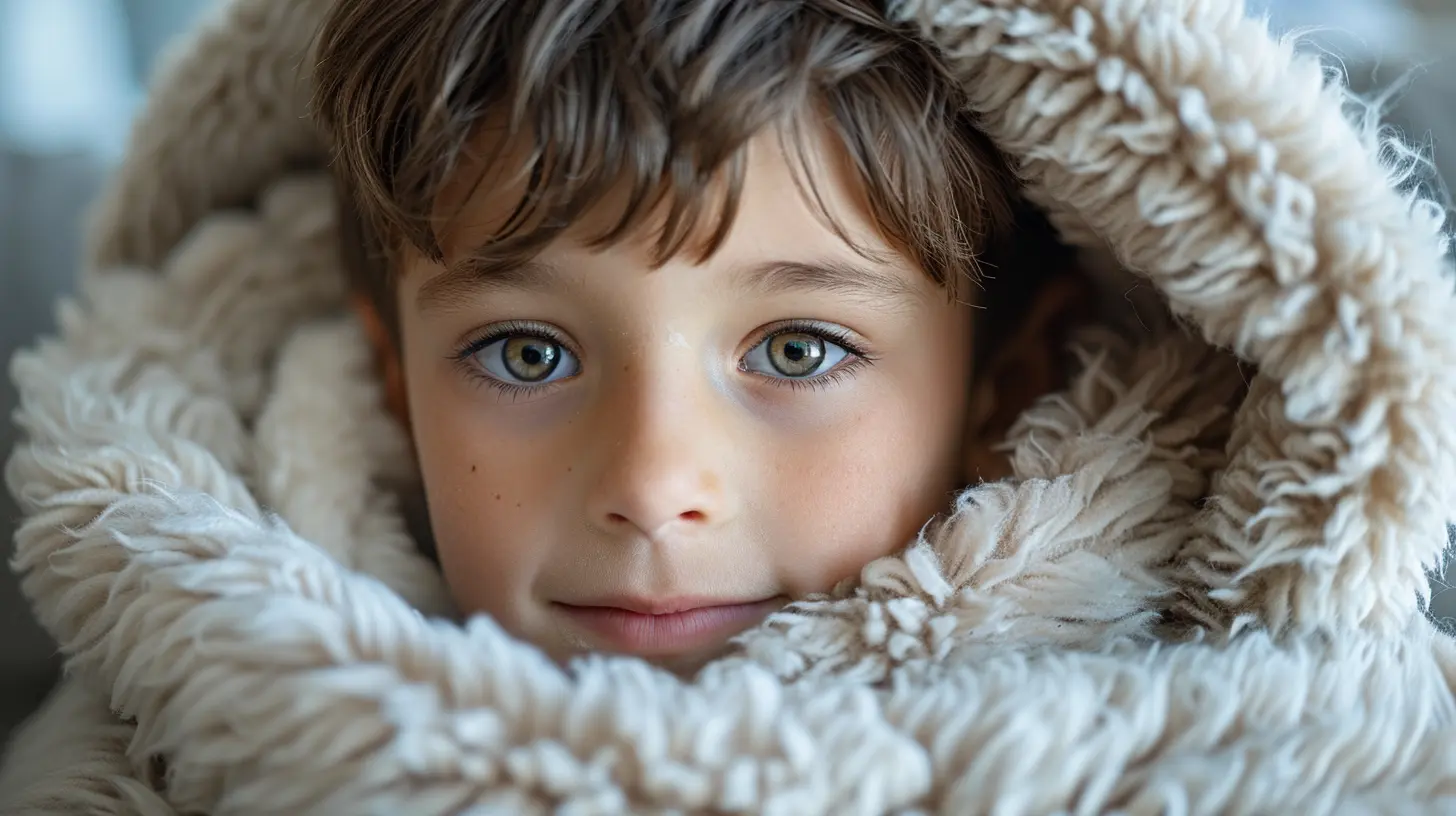14 February 2025
Taking care of a sick child can feel overwhelming, especially when it’s the flu. The runny noses, the endless tissues, and their tiny tired faces tugging at your heartstrings—it’s no easy task. But hey, you're not alone in this. Loads of parents have been in your shoes (or slippers if you’ve been camping out on the couch). In this guide, we'll walk you through practical, comforting, and effective ways to take care of your little one when the flu strikes. Let’s dive in!
What Exactly is the Flu?
Before we talk about care, let’s break down what we’re dealing with here. The flu, short for influenza, is a contagious respiratory illness caused by influenza viruses. Unlike the common cold, the flu hits harder and faster. Symptoms can include fever, chills, sore throat, runny or stuffy nose, body aches, fatigue, and sometimes vomiting or diarrhea (which tends to happen more in kids than adults). Doesn’t sound like much fun, right?Flu season usually peaks in the fall and winter months, but it can be unpredictable, like that toddler who’s suddenly silent in another room (you know something’s up). The good news? Most kids recover from the flu within a week or two. The not-so-good news? It’s going to take a little TLC to get there.
Signs Your Child Might Have the Flu
So, how do you know it’s the flu and not just a cold? Here are some signs to watch for:- Fever: Higher than 100.4°F (38°C) and often comes on suddenly.
- Fatigue: Your little energizer bunny suddenly runs out of steam.
- Cough: Persistent and can be dry or chesty.
- Body Aches: They might complain about their legs, arms, or “everything” hurting.
- Chills: Even if they’re bundled up, they could be feeling cold all over.
- Loss of Appetite: They might turn up their nose at their favorite snacks.
- Runny or Stuffy Nose: Comes with the territory.
- Sore Throat: They may mention that it hurts to swallow.
If you notice these symptoms—especially after an uptick in flu cases in your area—there’s a good chance it’s the flu.
Step-by-Step: Taking Care of a Child with the Flu
1. Create a Rest-Friendly Zone
When your child is sick, rest is the name of the game. Think of their immune system as a tiny army fighting off invaders—it’s going to need every ounce of energy to win the battle. Set up a cozy space with their favorite blanket, a comfy pillow, and maybe even their most-loved stuffed animal. Keep distractions like loud noises or unnecessary visitors to a minimum.Can you binge-watch a few Disney movies together? Absolutely. Sometimes, comfort looks like snuggles on the couch with a good dose of streaming.
2. Hydration is Non-Negotiable
Ever heard the saying, "fluids, fluids, and more fluids"? That’s because staying hydrated is critical when your child’s fighting the flu. Fevers can dehydrate the body quickly, which is the last thing you want. Offer plenty of water, and if plain water sounds boring, switch it up with:- Electrolyte Drinks: Kiddie versions of sports drinks or oral rehydration solutions work wonders.
- Broth-Based Soups: Chicken soup isn’t just comforting; it’s hydrating too.
- Popsicles: These are essentially ice water, but way more fun.
Pro Tip: If your child is refusing fluids, try offering small sips frequently instead of full glasses. It’s easier for them to manage.
3. Bring Down That Fever (If Needed)
Fever is a natural part of the immune system doing its job, but it can make your child feel miserable. If their fever is causing discomfort, talk to your pediatrician about giving a fever-reducing medication like acetaminophen or ibuprofen. Always follow the dosage instructions based on their age and weight.Don’t panic if the fever comes and goes—that’s totally normal. However, if their temperature goes over 104°F (40°C), or they seem unusually lethargic, it’s time to call the doctor.
4. Ease the Congestion
Stuffy noses are no fun, plain and simple. If your child is having trouble breathing comfortably, here are some congestion-busting tips:- Saline Nasal Spray: It’s gentle and helps to loosen up mucus.
- Humidifier: A cool-mist humidifier can help keep the air moist, making it easier for your child to breathe.
- Elevate Their Head: Use an extra pillow or prop up their mattress with books to keep their head elevated while sleeping. This helps drainage (gross, but effective).
You can also encourage them to blow their nose gently. And yes, “GENTLY” is the key here—kids are often tempted to blow as if they’re trying to inflate a balloon.
5. Combat Sore Throats
Sore throats are the worst. Luckily, you can help soothe the pain with:- Warm Drinks: Honey mixed in warm water can work wonders (but never give honey to children under one year old).
- Cool Treats: Popsicles or frozen yogurt can numb the throat while making your child smile.
- Saltwater Gargles: This works for older kids who can manage the “swish and spit” routine.
If the sore throat lasts longer than a couple of days or seems severe, give your pediatrician a call to rule out something like strep throat.
6. Keep Germs Contained
Let’s face it: kids are adorable germ-spreading machines. If you’ve got other kids in the house, you’ll want to take some precautions to keep the flu from bouncing around like a ping-pong ball.- Wash everyone’s hands frequently with soap and water.
- Teach your child to cough or sneeze into their elbow.
- Disinfect commonly touched surfaces like doorknobs, remote controls, and tablet screens.
Oh, and if your child is feeling up to it, a quick bath can help refresh them and wash off any germs lingering on their skin.
7. Keep an Eye Out for Warning Signs
While most cases of the flu are mild, things can sometimes take a turn. Watch closely for these red flags:- Difficulty breathing or unusually rapid breathing.
- Bluish skin color.
- Severe or persistent vomiting.
- Signs of dehydration (dry mouth, no tears when crying, fewer wet diapers).
- Extreme fatigue or confusion.
If you notice any of these symptoms, don’t hesitate—seek medical attention right away.
8. Offer TLC in Abundance
Sometimes, the best medicine for a child with the flu is you. Cuddles, kind words, and simply being there can make a huge difference. The flu can make them feel scared and vulnerable, and your reassurance is like a superhero cape for their spirit.
Prevention is Better Than Cure
Although this article is all about caring for the flu when it strikes, let’s not forget prevention. A flu vaccine is one of the best ways to keep your family safe. Encourage handwashing (sing the "Happy Birthday" song twice while scrubbing!), teach them not to touch their face, and make sure they’re eating healthy to keep their immune systems strong.Final Thoughts: You’ve Got This!
Taking care of a child with the flu isn’t a walk in the park, but it doesn’t have to feel like climbing Mt. Everest either. With the right mix of rest, hydration, and a whole lot of love, your little one will bounce back in no time. Remember, you’re doing an amazing job—even if it doesn’t always feel like it.Hang in there, parent warrior! This too shall pass.







Daisy Beck
Caring for a child with the flu can be challenging and emotionally taxing. Remember to offer plenty of comfort, hydration, and rest. Trust your instincts and seek support when needed. Your love and attention make a significant difference in their recovery. You're not alone in this journey.
March 11, 2025 at 3:44 PM